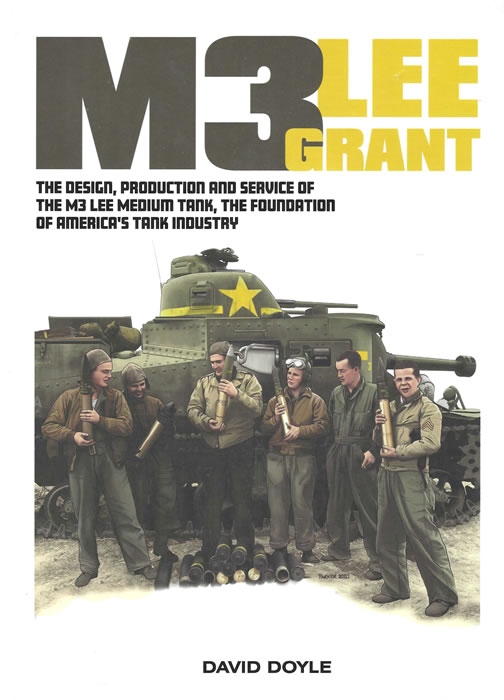|
|
|
|
| Home > Reviews > USA > M3 Lee Grant: The Design, Production and Service of the M3 Lee Medium Tank, The Foundation of America’s Tank Industry |
M3 Lee Grant: The Design, Production and Service of the M3 Lee Medium Tank, The Foundation of America’s Tank Industry
Reviewed by Cookie Sewell
Summary
Title: |
M3 Lee Grant: The Design, Production and Service of the M3 Lee Medium Tank, The Foundation of America’s Tank Industry by Didier Andres |
ISBN: |
978-0-9935646-8-0 |
Media and Contents: |
469 pp. with plentiful illustrations |
Price: |
|
Review Type: |
First Read |
Advantages: |
Marvelous and highly detailed history of all variants and modifications of the M2 and M3 Medium Tanks; wealth of data and tabular accounts of all versions. |
Disadvantages: |
No index; from a modeler’s standpoint no plans or component diagrams; no coverage of some derivative vehicles like the M12 SP 155mm Gun or the Canadian Ram |
Recommendation: |
Highly Recommeded for all WWII US and Commonwealth armor fans as well as other users of these vehicles |
FirstRead
(DISCLAIMER: I bought this book from David Doyle at the 2022 AMPS International Convention and promised him a review; I got sidetracked and am only getting to it now. Mea Culpa.)
Everyone has to start someplace, and in the case of the United States Army and the medium tank family it finally got going with the advent of the M2 Medium Tank beginning in 1935. Using the acumen of the US automotive industry, they used those techniques combined with items such as repurposed aviation engines to create the first medium tank which entered production and service starting in 1938.
While the M2 was the first medium tank to get into production, it had to fight the triple threat approval of the Infantry Board, the Artillery Board, and the Cavalry Board, the three elements of the US Army that controlled the prewar Army Ground Forces weapons. The hardest thing as with the M2A4 and M3 Light Tanks was being able to arm the tank with a cannon, here being a 37mm gun. 72 M2 tanks were built, followed by 126 improved M2A1 with a larger turret for the 37mm gun.
But as events in Europe were showing a bigger gun was needed, and so far American industry was not able to create a tank with a large turret for carrying a big gun. As a stopgap the M2 design was developed to mount a new 75mm gun in a sponson on the right side of the hull, the four corner machine gun turrets were removed and a new turret for the 37mm gun was designed and mounted on the hull roof. A bigger engine and wider tracks, along with improved armor and hull design, resulted in the prototype M3 Medium Tank.
By September 1940 both the US Army and the British had come to an agreement on the design of the new tank, with the British receiving one with a different turret design that met their standards of having the radio set in the turret rather than in the hull. They christened their design the Cruiser Tank Grant Mark I and those with the original turret the Cruiser Tank Lee Mark I.
Over the course of production the M3 would appear in no less than nine models (M3, M3A1, M3A2, M3A3, M3A4, M3A5 and Grant I and II plus Canal Light M3 and M3A1 models) with varying production of each one but a total of more than 6,200 vehicles. The factories also produced the M31 armored recovery vehicle once the M3 Medium was seen as somewhat obsolete and needing replacement in frontline units. There were also “defrocked” M33 prime movers for heavy artillery created from M3 chassis.
Until this book arrived in 2020 the “Bible” for the history of these vehicles was the seminal Richard P. Hunnicutt Sherman: A History of the American Medium Tank from 1978. That book provided some 77 pages on these tanks as well as coverage of the M12 and its companion M30 ammo carrier and the Canadian Ram series. But as this book is dedicated strictly to the M2 and M3 it provides a much greater in-depth view of the tank and the design work that went into its development and production.
The book has somewhere around 800 large, clear photos of all models and modifications of the basic M2 and M3 series tanks as well as a wealth of production and modification data for each one. Its one major flaw from my standpoint is the lack of an index to quickly locate specific items within the book.
If you are fan of US Medium Tanks or simply want to see how complex production of tanks can be when starting an industry this is a great read and a wonderful reference book.

